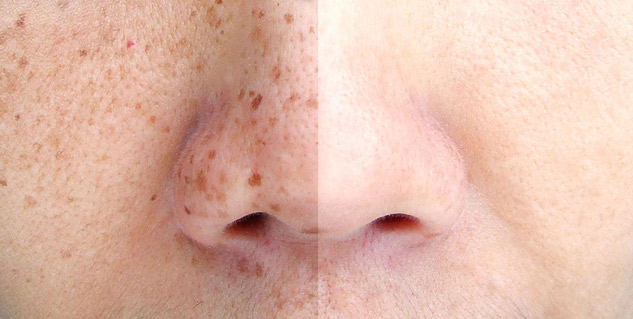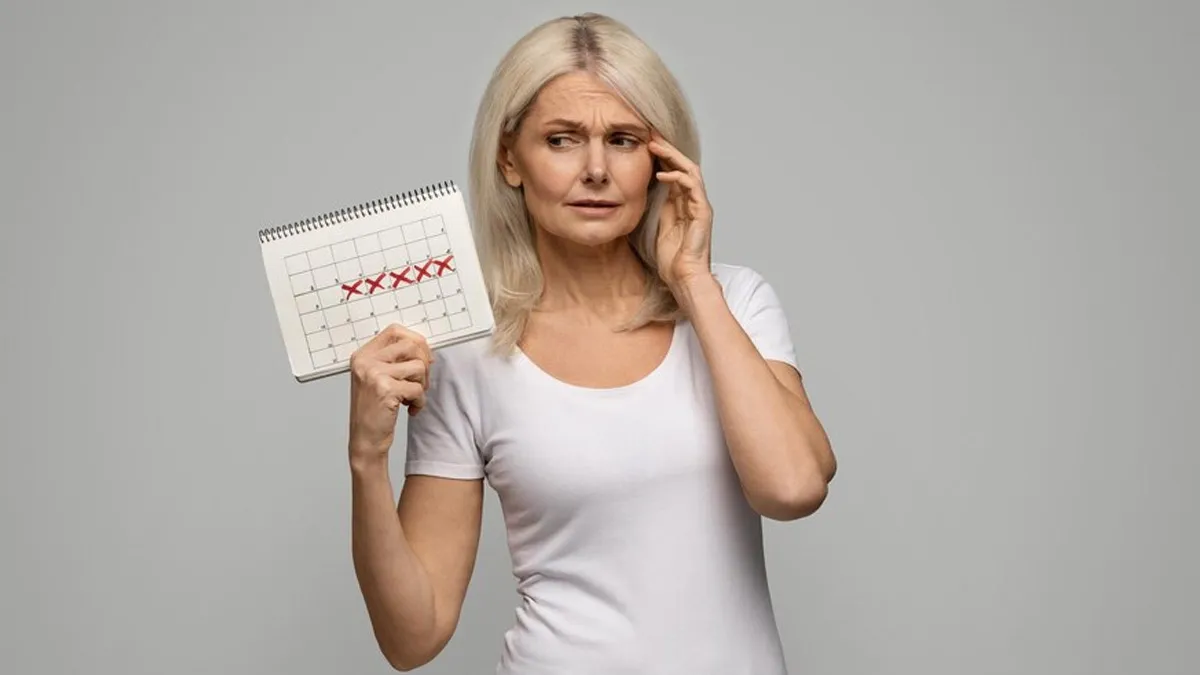
Freckles, also known as ephelides, are small, flat brown spots that usually develop due to sun exposure and genetics. But during menopause, these marks can darken or multiply due to hormonal shifts. In an exclusive interaction with the editorial team of Onlymyhealth, Dr Sanjeev Gulati, Department of Dermatology, Sharda Hospital - Noida, explained that as the oestrogen levels decrease, our skin's melanin production goes haywire. In simpler terms, this means an uneven distribution of pigmentation. Put that together with years of accumulated sun exposure, and freckles may suddenly look darker or appear in new places, especially on the face, chest, arms, and hands. Here is everything he shared with us.
Table of Content:-
Key Ways To Manage and Prevent Freckles During Menopause
A few expert-approved ways to manage and prevent freckles during menopause include:
1. Sun Protection Is Non-Negotiable
Freckles worsen with UV exposure. Menopausal skin is already more sensitive, so broad-spectrum sunscreen becomes your first line of defense.
- Use SPF 30 or higher daily, even indoors or on cloudy days.
- Reapply every two hours if outdoors.
- Wear wide-brimmed hats, sunglasses, and protective clothing to minimise direct sun contact.

2. Incorporate Gentle Skin Brighteners
Certain skincare ingredients can help lighten freckles without damaging sensitive menopausal skin:
- Vitamin C: Helps fade pigmentation and boosts collagen.
- Niacinamide (Vitamin B3): Reduces dark spots while calming inflammation.
- Licorice Root Extract: A natural alternative that targets pigmentation.
- Use brightening serums in the morning under sunscreen for best results.
3. Consider Retinoids (With Caution)
Retinoids, like retinol or tretinoin, encourage skin cell turnover and can gradually reduce freckles. However, menopausal skin is often thinner and drier, so start slowly:
- Use retinoids two to three times a week as a starting point.
- Combine with a rich moisturiser to avoid dryness.
- Take advice from your dermatologist before using prescription retinoids.
4. Try Professional Treatments, If Needed
Home care may not be sufficient, and professional skin treatments may be able to help:
- Chemical Peels: Mild to moderate peels may lighten freckles in the long term.
- Laser Therapy: There are lasers that target melanin directly, destroying freckle pigment.
- Microneedling: Stimulates collagen and can even out the tone.

Freckles themselves are harmless, but menopause increases your risk for sun-induced skin damage. Regularly check for changes in size, color, or shape of any spots. Consult a dermatologist if you notice anything unusual, it’s important to rule out skin cancer. Note that you should always discuss with a certified dermatologist to choose the safest option for menopausal skin.
Holistic Tips For Skin Wellness During Menopause
Additionally, a holistic approach toward skin wellness and overall health is important during menopause. Here are a few things to keep in mind:
- Stay Hydrated: Dry skin can make pigmentation look worse.
- Eat Antioxidant-Rich Foods: Berries, leafy greens, and nuts help protect skin from oxidative stress.
- Manage Stress: Chronic stress may worsen hormonal imbalances and skin issues.
- Prioritize Sleep: Skin heals and regenerates overnight.
Bottomline
Freckles during menopause are normal but manageable. With consistent sun protection, targeted skincare, and healthy lifestyle habits, you can maintain radiant, even-toned skin well into midlife.
Freckles, also known as ephelides, are small, flat brown spots that usually develop due to sun exposure and genetics. But during menopause, these marks can darken or multiply due to hormonal shifts.
As the estrogen levels decrease, your skin's melanin production goes haywire, meaning an uneven distribution of pigmentation. Put that together with years of accumulated sun exposure, and freckles may suddenly look darker or appear in new places, especially on the face, chest, arms, and hands.
Key Ways To Manage and Prevent Freckles During Menopause
1. Sun Protection Is Non-Negotiable
Freckles worsen with UV exposure. Menopausal skin is already more sensitive, so broad-spectrum sunscreen becomes your first line of defense.
Use SPF 30 or higher daily, even indoors or on cloudy days.
Reapply every two hours if outdoors.
Wear wide-brimmed hats, sunglasses, and protective clothing to minimize direct sun contact.
2. Incorporate Gentle Skin Brighteners
Certain skincare ingredients can help lighten freckles without damaging sensitive menopausal skin:
Vitamin C – Helps fade pigmentation and boosts collagen.
Niacinamide (Vitamin B3) – Reduces dark spots while calming inflammation.
Licorice Root Extract – A natural alternative that targets pigmentation.
Use brightening serums in the morning under sunscreen for best results.
3. Consider Retinoids (With Caution)
Retinoids, like retinol or tretinoin, encourage skin cell turnover and can gradually reduce freckles. However, menopausal skin is often thinner and drier, so start slowly:
Use retinoids 2-3 times a week as a starting point.
Combine with a rich moisturizer to avoid dryness.
Take advice from your dermatologist before using prescription retinoids.
4. Try Professional Treatments—If Needed
Home care may not be sufficient, and professional skin treatments may be able to help:
Chemical Peels – Mild to moderate peels may lighten freckles in the long term.
Laser Therapy – There are lasers that target melanin directly, destroying freckle pigment.
Microneedling – Stimulates collagen and can even out the tone.
Always discuss with a certified dermatologist to choose the safest option for menopausal skin.
Focus On Skin Health, Not Just Appearance
Freckles themselves are harmless, but menopause increases your risk for sun-induced skin damage. Regularly check for changes in size, color, or shape of any spots. Consult a dermatologist if you notice anything unusual—it’s important to rule out skin cancer.
Holistic Tips For Skin Wellness During Menopause
Stay Hydrated – Dry skin can make pigmentation look worse.
Eat Antioxidant-Rich Foods – Berries, leafy greens, and nuts help protect skin from oxidative stress.
Manage Stress – Chronic stress may worsen hormonal imbalances and skin issues.
Prioritize Sleep – Skin heals and regenerates overnight.
Final Thoughts
Freckles during menopause are normal but manageable. With consistent sun protection, targeted skincare, and healthy lifestyle habits, you can maintain radiant, even-toned skin well into midlife.
Also watch this video
How we keep this article up to date:
We work with experts and keep a close eye on the latest in health and wellness. Whenever there is a new research or helpful information, we update our articles with accurate and useful advice.
Current Version